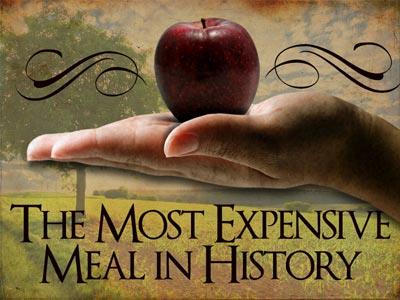-
The Ugly, The Bad, And The Good
Contributed by Joseph Ng on Nov 28, 2017 (message contributor)
Summary: God’s verdict on the lives of Solomon, Ahab, and Hezekiah is different from that of secular history and is what matters ultimately.
Opening:
You’ve heard of the 1966 Western movie starring Clint Eastwood entitled The Good, the Bad, and the Ugly. As we consider the lives of kings in the Old Testament, it will be apparent that some are ugly, bad, or good. In particular, the lives of three Hebrew kings--Solomon, Ahab, and Hezekiah--are significant, according to the Biblical and archaeological legacy they left behind.
I. The Ugly: King Solomon (900s BC). 1 Kings 11:1-11
A. The Archaeological Data
Solomon’s contribution to Near Eastern architecture is his hallmark double-layer casemate walls. Found in fortifications across Israel, from Hazor and Megiddo to Gezer and Eilat, the rooms formed by partitions across parallel walls of stone were used for storage and armoury.
Stone evidence of round mangers and rectangular drinking troughs with hitching holes remains at Tel Megiddo (pictured below) and Tel Hazor to embarrass Solomon’s memory to this day. They form part of Solomon’s 4,000 stalls for chariots and horses, and 12,000 horsemen. 1 Kings 4:26; 2 Chron 9:25.
[Explanation: Accummulation of horses prohibited Dt 17:16-17]
B. The Biblical Valuation
A Beautiful Start
Asks for wisdom and gets it. 1 Kings 3:1-28; 4:29-34
Given conditions for continued blessing. 1 Kings 9:1-9
A Messy Turn
Keeps 700 wives and 300 concubines. 1 Kings 11:1-3
Compromises his faith when old, and worships their idols. 1Kings 11:4-13
A Sober End
Haplessness of speed, strength, wisdom, understanding, and skill. Eccl 9:11
Hope through reverencing the Creator! Eccl 12:1, 13-14
II. The Bad: King Ahab (800s BC). 1 Kings 16:30-33
A. The Archaeological Data
Built his capital and ivory palace in Samaria. 1 Kings 16:24-33; 22:37-39
Doubled the size of Solomon’s strategic cities, e.g. Hazor and Megiddo, where he created magnificent water systems to withstand the privations of a siege. The Hazor water system (pictured below) descends vertically 40 m to reach beneath the water table, and the Megiddo shaft overcomes the problem of an external access by going straight down through bedrock to the spring via what are 180 steps today.
[Information: Excavations continue at Hazor and Megiddo.]
B. The Biblical Valuation
Dubious reputation of being the worst-ever king in his day, with a byword for a queen. 1 Kings 16:30-33
Zenith of Baal worship in his day, requiring a whirlwind (Hazael), earthquake (Jehu), fire (Elisha), and gentle blowing (7,000-strong faithful remnant) to rectify. 1 Kings 19:9-18
III. The Good: King Hezekiah (700s BC). 2 Kings 18:1-5
A. The Archaeological Data
Not too many glorious fortresses around the country: he was too busy staying alive as the Northern Kingdom and most of Judah collapses around him.
One famous exception: The desperately constructed Hezekiah Tunnel and Siloam Inscription in besieged Jerusalem are among his legacy as he patched up the city to face the invincible Assyrians. 2 Chron 32:2-4, 30
[Illustration: Discovered in 1880 and now in the Istanbul Museum with a replica in Israel Museum, the Inscription reads, "The tunneling was completed.... While the hewers wielded the axe, each man toward his fellow ... there was heard a man’s voice calling to his fellow ... the hewers hacked each toward the other, axe against axe, and the water flowed from the spring to the pool, a distance of 1,200 cubits."]
More famous as a "breaker" than a builder: broke Nehushtan and pagan shrines, and then "broke" the Temple treasury. 2 Kings 18:4, 14-16 (again at life’s end, Isa 39)
The six-sided Sennacherib Prism, discovered around 1850, proclaims Sennacherib’s eight "victorious" military campaigns undertaken against various peoples who refused to submit to Assyrian domination. As part of the third campaign, he is said to have beseiged Jerusalem and imposed heavy tribute on Hezekiah, King of Judah, but it is not admitted that Sennacherib’s army was badly crushed by Yahweh’s angel as a result.
B. The Biblical Valuation
The best king for all times, regarded as "successful" (NIV); none better before or after, for trusting and obeying Yahweh. 2 Kings 18:5-7
Didn’t compose too many proverbs, but he kept his men busy copying out Solomon’s proverbs. Prov 25:1
Valuation stands despite his irrational exuberance on physical recovery at life’s end, exposing all his wealth to Babylonian King Merodach-Baladan. Isaiah 39
Messiah’s ancestry. Matt 1:9-10
Close:
Going by archaeological data alone, the bad and the ugly kings were astounding builders and success figures; the good guy was an object of derision.
But the final verdict of success lies with our omniscient God. Will you leave behind large stables and water systems or a eulogy par excellence, inscribed by God Himself? What’s good, bad, and ugly in the eyes of the world might be the ugly, the bad, and the good in His.

 Sermon Central
Sermon Central



